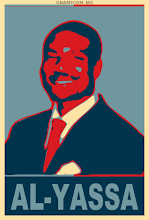How to obtain investment property financing is one of the first things you must figure out as a new multifamily investor. Assuming you're not yet equipped to pay cash, your total acquisition costs boil down to three primary components:
The mortgage or loan (traditional bank, mortgage broker, private lender, etc.)
Your down payment (can be out-of-pocket or financed)
Your closing costs (can be out-of-pocket or financed)
THE MORTGAGE
Of course, this is the largest of your investment property financing components, and the specific type of mortgage you get may depend on the nature of the property you are buying. For a functional, fully occupied multifamily structure, a standard 30-year fixed-rate bank mortgage will fit the bill.
A fixer upper, on the other hand, may require a different funding source, because banks do not like the added risk associated with a rehab job. Additionally, the "non-functional" nature of this type of property makes it difficult to appraise. In fact, most times these appraisals are undervalued, which could result in a bank-mandated reduction of the loan amount, or even a voiding of the deal by the lending bank.
Although I am partial to fixer-upper projects, I did not start out this way. My first few acquisitions were of the more traditional, already-functional type, using regular bank mortgages. And unless you have access to a boatload of cash or to a private lender, you will probably have to start out the same way I did – purchasing currently occupied rental properties.
Although you'll miss out on the "fixer-upper discount," an initial focus on fully occupied properties will allow you to learn the ropes before "graduating" to the more advanced fixer-upper stuff. This will also give you time to find a private lender you can trust, which will enable you to execute the rehab strategy.
YOUR DOWN PAYMENT
The largest out of pocket expense associated with investment property financing is usually the down payment. Down payment requirements are more stringent with a traditional bank compared to a private, non-bank lender. For example, many private lenders will finance 100% of the purchase price (not to mention closing & rehab costs), especially if the term of the loan is short (like 6- or 12-months). But if you need to go with a traditional bank mortgage, a down payment of some sort will almost always be required. The bank's down payment requirement is defined by the "loan-to-value" ratio (LTV). For example, an 80% LTV loan requires a 20% down payment.
Right now, lenders require a 20%-30% down payment. As long as you have good credit, most mortgage brokers can hook you up with a 80% or even 85% LTV FHA mortgage (i.e., you put down 15% or 20%, respectively). Of course the upside compared to traditional 70% LTV loans is that you put less money down out of your own pocket, which also drives up your cash-on-cash ROI when you sell. However, high LTV mortgages do have downsides:
Interest rates tend to be higher
You may have to pay for points at closing (calculated as 1% of the mortgage amount)
The appraised value must be higher because there is less of an equity cushion
Any down payment that is less than 20% of the purchase price triggers private mortgage insurance (PMI).
Because of these issues, I would avoid straight-up high-LTV bank mortgages if at all possible. A much better investment property financing alternative is to get an 80% LTV loan, and use a secondary financing source for the 20% down payment. And luckily, you do have a few non-cash funding options for the down payment.
Obviously if you cannot find a secondary funding source for the down payment, then you will indeed have to pursue a high LTV loan even though this is not ideal. That said, this can be viable as long as your projected rental income is enough to cover the higher payments. Then, in a few years, you should have enough built-up equity to refinance into a standard 80% LTV, 30-year fixed-rate mortgage.
CLOSING COSTS
Unfortunately, closing costs are a necessary evil in terms of investment property financing, even when using a private lender (although bank closing costs will always be higher).
FINAL THOUGHTS
The bottom line is that – in most cases – you'll want to get an 80% LTV fixed-rate loan using a secondary financing source to fund the 20% down payment. This gives you the best of all worlds...you minimize your out-of-pocket expense while at the same time minimizing your largest go-forward expense item as well as your risk. This maximizes the odds that you will optimize your profit when you sell years down the road.
So, investment property financing is not overly difficult, but it does take some time to figure it all out and find the best deal. Just follow the advice on these articles and do not waver. Keep moving forward.
Yes, you CAN do this!
Tuesday, October 20, 2009
Subscribe to:
Post Comments (Atom)


No comments:
Post a Comment